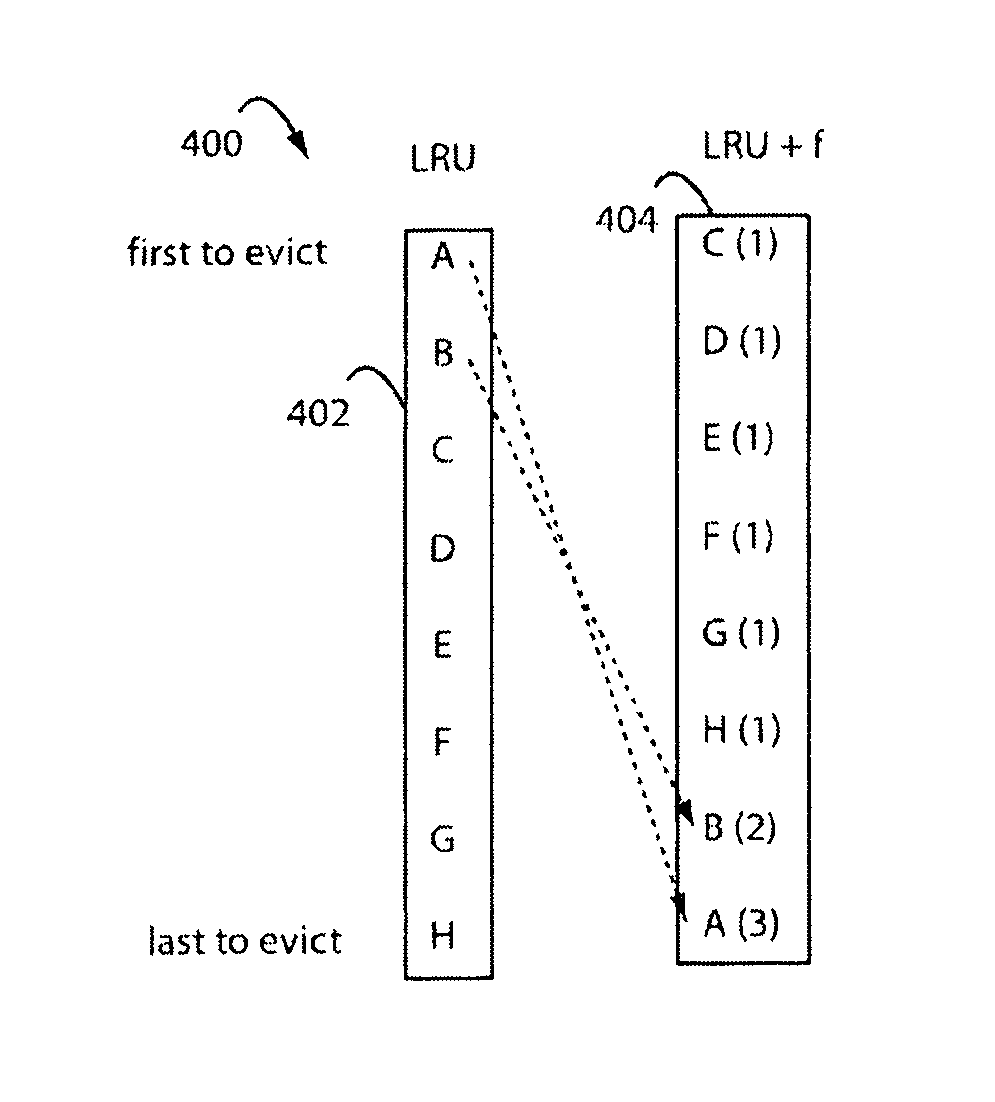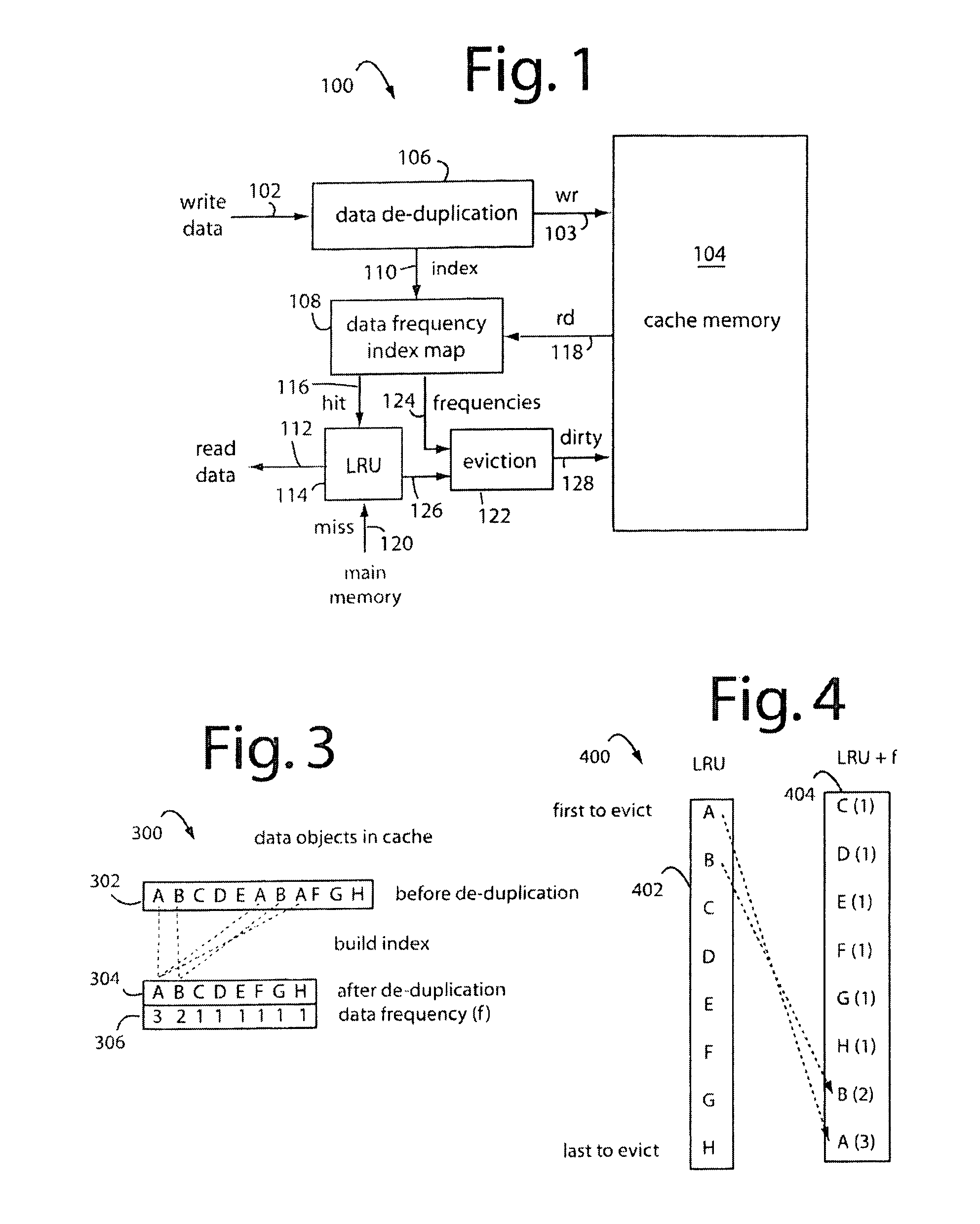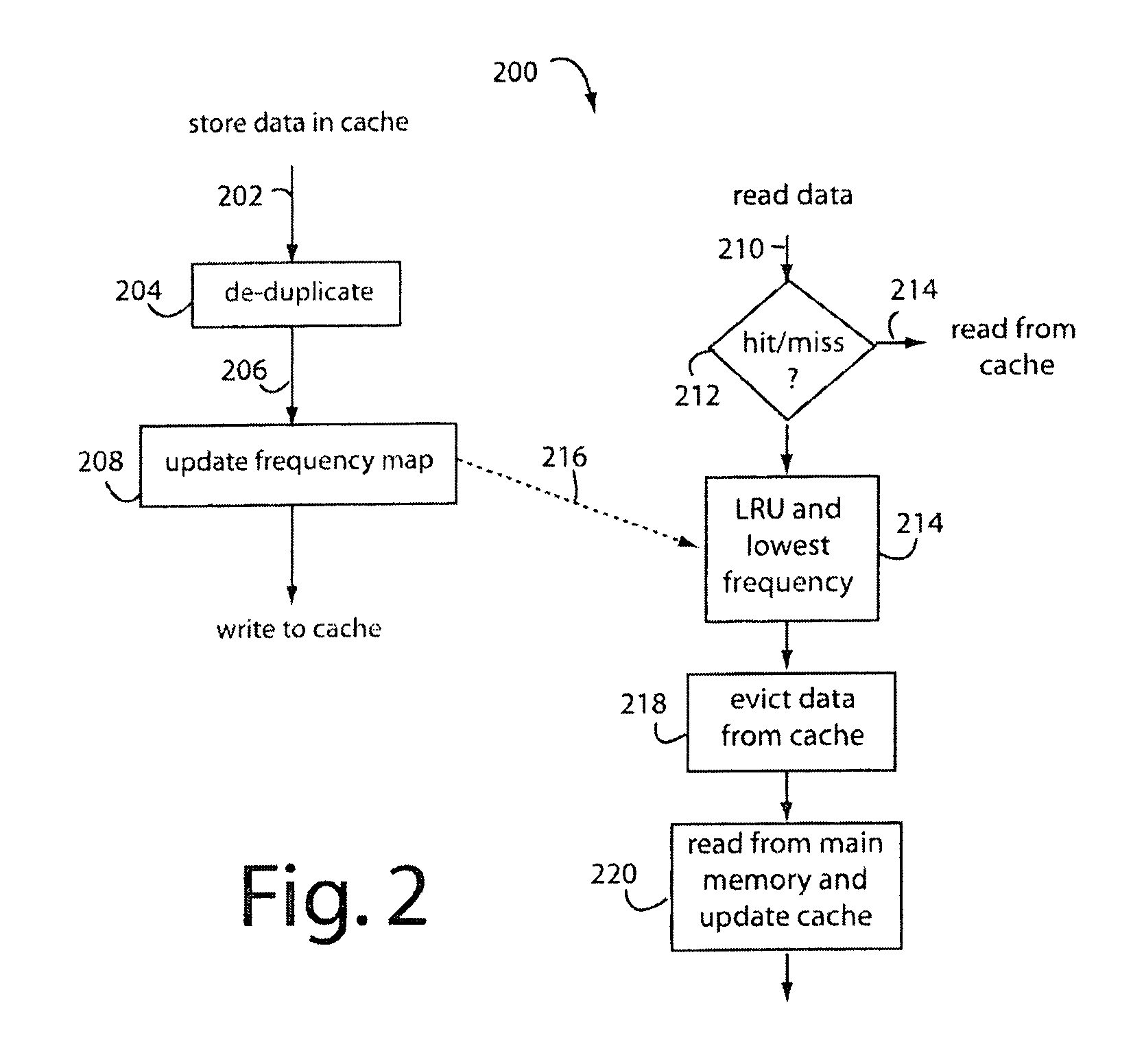Data block frequency map dependent caching
a frequency map and data block technology, applied in computing, instruments, electric digital data processing, etc., can solve the problems of difficult to determine what to put in the cache, and general boil down of problems, so as to improve system performance and improve cache performan
- Summary
- Abstract
- Description
- Claims
- Application Information
AI Technical Summary
Benefits of technology
Problems solved by technology
Method used
Image
Examples
Embodiment Construction
[0020]In the following detailed description of the preferred embodiments, reference is made to the accompanying drawings, which form a part hereof; and within which are shown by way of illustration specific embodiments by which the invention may be practiced. It is to be understood that other embodiments may be utilized and structural changes may be made without departing from the scope of the invention.
[0021]FIG. 1 represents a cache system embodiment of the invention, and referred to herein by the general reference numeral 100. Cache system 100 accepts write data 102 from hosts, or something similar, that it then decides to place in a cache memory 104. A data de-duplication engine 106 tests the write data for duplication in the cache memory 104 and writes an index and frequency for such in a data frequency index map 108. The result is a single instance of duplicate data, with an index 110. A read data 112 access request, e.g., from the central processing unit (CPU), activates a le...
PUM
 Login to View More
Login to View More Abstract
Description
Claims
Application Information
 Login to View More
Login to View More - R&D
- Intellectual Property
- Life Sciences
- Materials
- Tech Scout
- Unparalleled Data Quality
- Higher Quality Content
- 60% Fewer Hallucinations
Browse by: Latest US Patents, China's latest patents, Technical Efficacy Thesaurus, Application Domain, Technology Topic, Popular Technical Reports.
© 2025 PatSnap. All rights reserved.Legal|Privacy policy|Modern Slavery Act Transparency Statement|Sitemap|About US| Contact US: help@patsnap.com



